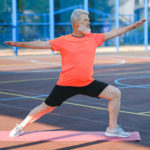Avoid Holiday Headache Triggers; Enjoy the Holiday
Oh, how my head aches!
That all to familiar pain pulsating at the temples or base of the skull, the burning sensation down the neck and between the shoulder blades – these are classic symptoms of a primary headache, which could be a migraine, cluster or tension type headache (TTH). A TTH is the most common type of primary headache and can literally be a pain in the neck.
Do you find yourself reaching for “Vitamin I” (Ibuprofen) again and again? With the kids back in school and holidays approaching, stress levels are going to increase just as we are squeezing in more shopping and errands during lunch hours, after work and on the weekends. Traffic jams and accidents, long lines and frustrated shoppers often lead to stress tension headaches, which can be worsened by clinching your jaw or grinding your teeth. And how many of us haven’t found ourselves clenching our jaw while trying to find a parking space at the mall or grocery store?
Millions of people annually suffer from TTH, which can be caused by a variety of things: poor posture, dehydration, lack of food, stress, caffeine withdrawal, depression, anxiety, lack of sleep patters, lack of physical activity and occasional hormonal changes.
A TTH is related to a tightening or spasm of the surrounding neck muscles, head and shoulder areas. As the muscle tissue spasms, the body goes into a protective mode by creating scar tissue over the spasm area. Scar tissue can help lock the pain into place. Pain can also be associated with a trigger point, which is a knot of tightly contracted muscle tissue. Blood and oxygen flow to the contracted tissue is reduced, resulting in an accumulation of waste products and irritation of the trigger point.
An irritated trigger point can result in pain elsewhere in your body, which is known as “referred pain.” For example, while you may have an irritated trigger point in your neck, you may feel pain around your eye. There are many referral patters associated with active trigger points.
According to doctors Janet Travell and David Simons, leading researchers in the area of myofascial pain, trigger points are the primary cause of pain 75 percent of the time and are at least a part of nearly every pain problem.
Now, let’s plan a therapy strategy now to help make this a stress – and tension – free holiday, and reduce your chances of getting a TTH. Our main goal is to reduce any tension in the surrounding neck, shoulder and cranial muscles. Regular massage therapy, stretching, proper nutrition, hydration, moist heat and ice are effective ways to deactivate trigger points and help restore muscle tissue to its happy and healthy state, and improve mobility.
Finding the right massage therapist with the proper qualifications can be a great benefit. A qualified therapist can administer trigger point, myofascial and deep tissue massage therapies, guide you with active isolated stretching and recommend certain “at home” exercises for prevention. They can also refer you to other health care professionals when necessary. And as always, if your headaches occur frequently or are severe, please seek the advice of your physician.
According to the Mayo Clinic, “managing a tension headache is often a balance between fostering healthy habits, finding effective non-drug treatments and using medications appropriately.” So let’s get a head start on the upcoming New Year and start developing those healthy habits to reduce stress and TTH for the holidays. The best gift for the holidays is your health.
-For more information about reducing trigger points and Stretching Your Life contact Kim via email (Tallahassee at 850-224-2639) or at contact us today!




